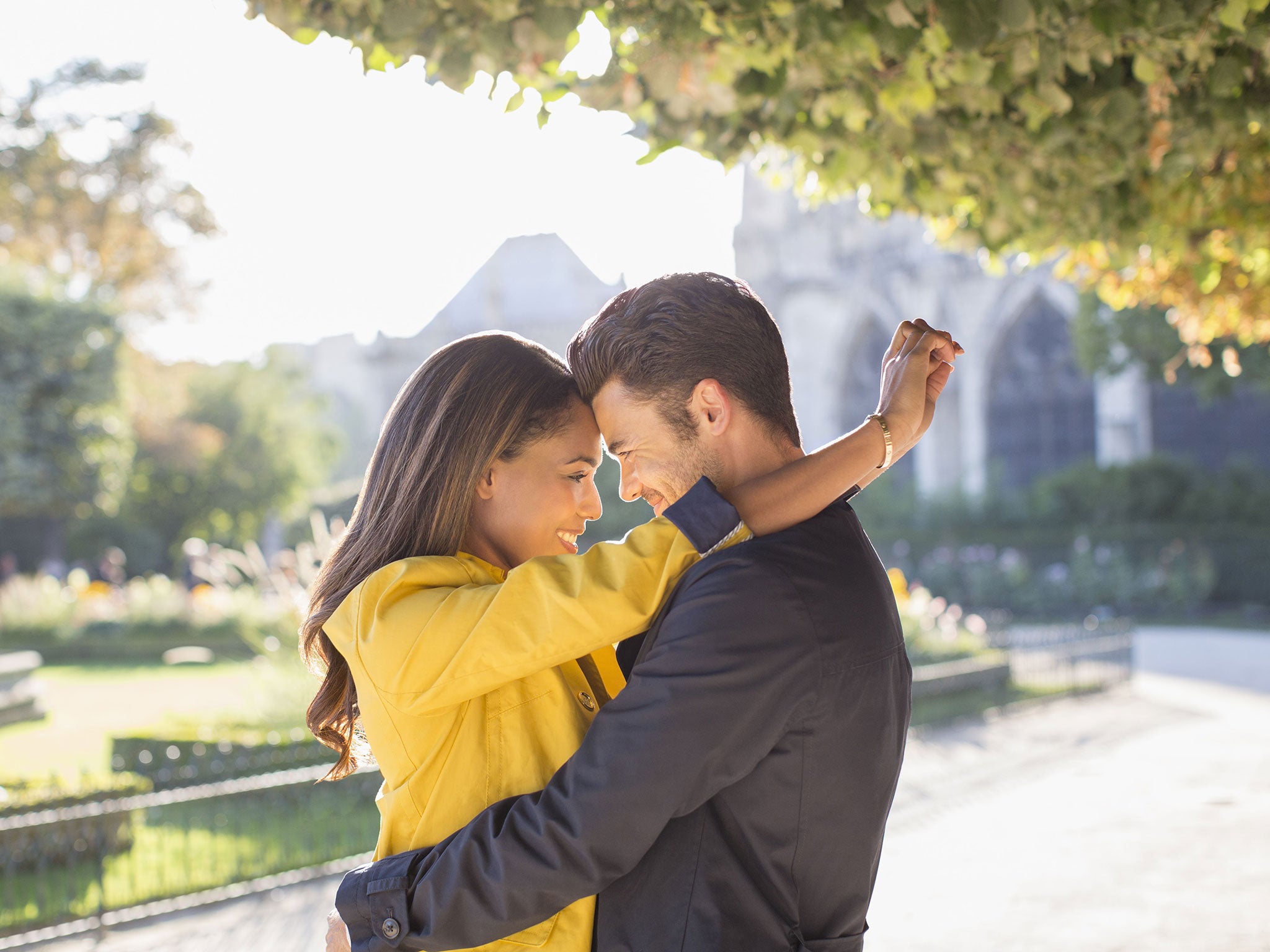One in 10 relationships now cross racial boundaries
Mixed-race romances blossom as Britain’s ethnic divisions melt away

Your support helps us to tell the story
From reproductive rights to climate change to Big Tech, The Independent is on the ground when the story is developing. Whether it's investigating the financials of Elon Musk's pro-Trump PAC or producing our latest documentary, 'The A Word', which shines a light on the American women fighting for reproductive rights, we know how important it is to parse out the facts from the messaging.
At such a critical moment in US history, we need reporters on the ground. Your donation allows us to keep sending journalists to speak to both sides of the story.
The Independent is trusted by Americans across the entire political spectrum. And unlike many other quality news outlets, we choose not to lock Americans out of our reporting and analysis with paywalls. We believe quality journalism should be available to everyone, paid for by those who can afford it.
Your support makes all the difference.Almost a tenth of couples in England and Wales involve two people of different ethnicities, according to census figures which reveal that society is becoming increasingly relaxed about mixed-race relationships.
In total, 2.3 million people are now living in inter-ethnic relationships. The proportion of all couples composed of people of different ethnic backgrounds has increased from 7 per cent in 2001 to 9 per cent in 2011, as the country’s growing multi-culturalism influences our romantic choices.
Reflecting the wave of immigration from Eastern European countries since the expansion of the EU in 2004, the most common inter-ethnic relationship is between people who are white British and those who class themselves as “other white” (most from countries such as Poland). These make up 16 per cent of all mixed-race couples.
Two in five of all inter-ethnic relationships include someone who is white British, the new data from the 2011 census shows.
But white British people are in fact the ethnic group least likely to be in a mixed race couple, with just 4 per cent currently with someone of a different ethnicity. This compares to 7 per cent of Bangladeshi people, 9 per cent of Pakistanis, and 12 per cent of Indians.
The group most likely to be in a relationship with someone of a different race in England and Wales are white Irish, three-quarters of whom are not in a relationship with someone from the same race.
High-profile Britons in mixed-race relationships include Channel 4 newsreader Jon Snow, who married his second wife, the Zimbabwean neurosurgeon Precious Lunga in 2010.
Sunder Katwala, director of the British Future campaign group, welcomed the increase in England and Wales. He said: “There’s a normalisation about mixed-race relationships now in this generation. People have stopped noticing them in cities, in a way that probably isn’t quite the case in some European countries.
“In Manchester, Birmingham and Leeds, as well as London, it’s not something you’d notice any more because it’s so commonplace.”
Omar Khan, acting director of the Runnymede Trust, said: “This is good news but I also wouldn’t want to say that it shows the social significance of race has disappeared completely. The ethnicity of the minority parent still matters in terms of social outcomes.”
Previously released data from the 2011 census has shown that England’s ethnic-minority population grew from 9 per cent of the total in 2001 to 14 per cent. The biggest single increase was in the number of people claiming a mixed ethnic background, with numbers doubling to 1.2 million.
The relationships data released yesterday showed that people who are married or in a civil partnership are much less likely to be in an inter-ethnic relationship than those who co-habit (8 per cent compared with 12 per cent). Rachel O’Brien, an Office for National Statistics researcher, said: “It’s difficult to say what’s driving this. It’s quite possible that people who are married have a more traditional approach.”
The biggest difference between the sexes was amongst those who identify themselves as Chinese. In this group women are almost twice as likely, at 39 per cent, to be in an inter-ethnic relationship than men, of whom just 20 per cent are.
Case study: British/Chinese couple
Pete Lord, 64, and June Lord, 60, Exeter, both retired
We met in 1976 through my job, working in the ambulance service in Lancashire, and relocated to Devon. I was staying in temporary accommodation of a nurses home in the local psychiatric hospital and saw this young good-looking Chinese girl in the social club. We made conversation, it went from there and we got married in 1980. Of course, the meals I had made for me were a great help! There was no cultural adaptation needed, although there were some difficulties understanding each other at first with her limited English and my Lancashire accent. I think with travel more readily available and cheaper, there is more openness to inter-ethnic meetings and marriages. Attitudes have changed with a new generation growing up and seeing more diversity in their communities.
Join our commenting forum
Join thought-provoking conversations, follow other Independent readers and see their replies
Comments